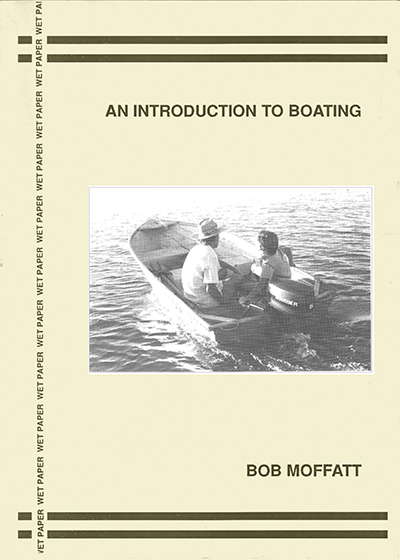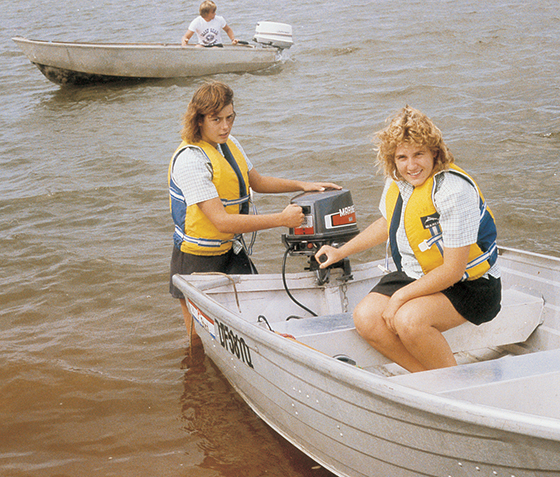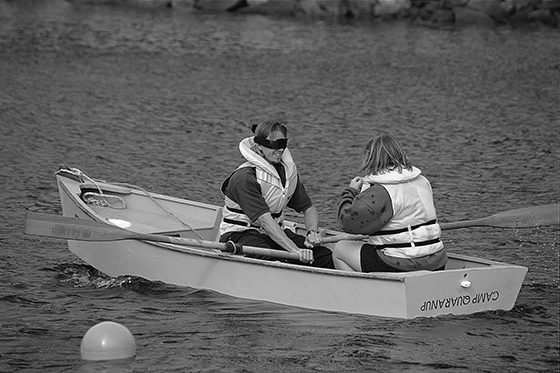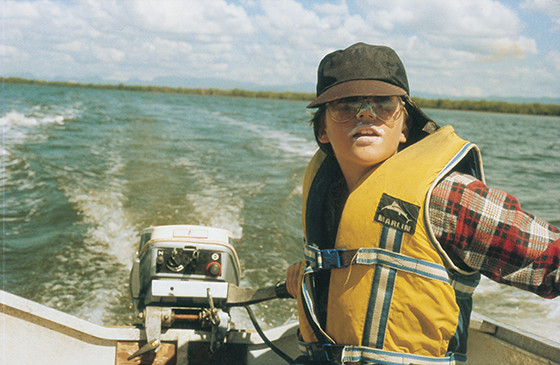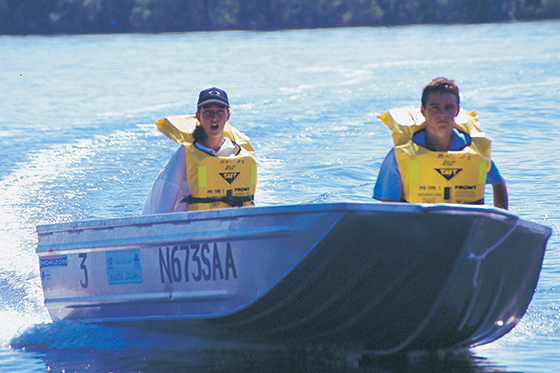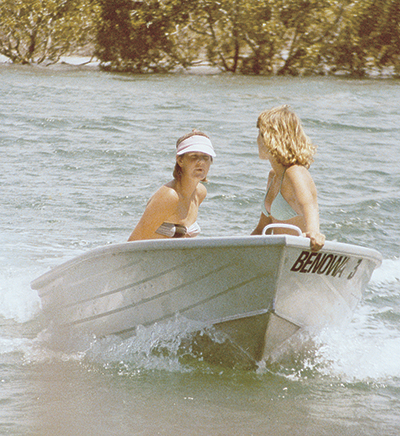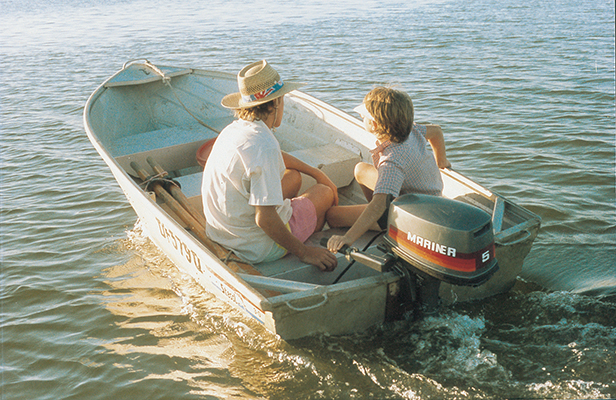1989 An Introduction to Boating

ISBN : 1 86283 000 2
Published Date : 01 January 1989
Product Code : 1989 Wet Paper
Format : pdf file for download
By Bob Moffatt
Non-commercial school licence
The publisher and author/s of this pdf file grant to the school a revocable, non-exclusive, non-transferable right and licence to use the content, exercises, lab and field work lesson notes within the school for educational purposes only.
Yearly record keeping
To ensure fair payment is made to collecting societies, educational institutions are to record the digital ISBN above.
- To do this go to the school office and ask the IT department or whoever looks after digital book licences to record the ISBN in the school digital library licence catalogue.
Copyright
Except as permitted by the Copyright Act 1968 (Cth), you may not reproduce any of the contents of this publication, without the written permission of the copyright owner.
The title to, and intellectual property rests with the publisher's author/s, illustrators, photographers and design consultants and nothing in the agreement should be construed as transferring those rights to the school.
Educational exemption
There are exemptions under the Act that allow educational and government use of text, images and music scores for educational purposes.
These exemptions are in Part VB of the Copyright Act 1968 (Cth), where you are entitled to reproduce or communicate 10% of the words or one chapter from this file for educational use within your school. If you wish to reproduce or communicate MORE than 10% contact the copyright owner.
For more information, see www.copyright.com.au and www.copyright.org.au.
Teachers Information
Notes:
These boating notes were now taking shape and having been trialled now for almost 10 years from our earlier 1979 ideas in Gladstone, contained activities that were possible with high school students.
The 90 odd pages formed the basis of all power boating books to follow as well as the syllabus topics for the new marine studies Qld syllabus.
ACKNOWLEDGEMENTS
Wet Paper Publications would like to thank the following for their assistance in the design and trialling of this module:
Terry Balsom, Dennis Bridger, Steven Byers, Carol Clavery, Cyril Connell, Department of Harbours and Marine, Tony Failes, Fabian Fay, Jill Green, Steve Hall, Shirley Henney, Jim Baker, Rob Heaney, Staff Heaneys Printing Factory, John Howard,.Ann Kenny, Meran Kilgour, David Kopelke, Greg Martin, Steve McCabe, John McGregor, Graham Mitchell, Mark Moffatt, Greg Moffatt, Paula Moffatt, Thelma Moffatt, Trent Moffatt, Victor O'Kiffe, Sue Oats, Kelvin Rodgers, Sea World, Students and Staff of Benowa State High School and Gladstone State High Schools, Mark Warne, Jim Shefield, Rod Waldon, Bill Dobbie, and Nerang Arts and Graphics.
Contents
- Chapter 1 : Before setting out
- Chapter 2: Your first lessons
- Chapter 3: Acquiring new skills
- Chapter 4: Getting your licence
- Chapter 5: Minor repairs and maintenance
- Chapter 6: How your engine works
- Appendix: Assignment work and copyright free sheets Boating certificate
Course topics included
- Ropework:-including at least uses and applications of a clove hitch, round turn and a two half bitch, bowline, figure of eight, sheetbend
- Rowing and anchoring of boats
- Starting an outboard motor and driving it round a set course:, bringing it back safely to shore
- Mixing two stroke fuels in a given ratio
- The shapes, differences, advantages and disadvantages of planing, semi-displacement, displacement hulls and multi.hulls
- Different sailing craft rigs. ie; multihull, sloop, cutter, cat, gunter, schooner, ketch and yawl
- Terminologies applicable to most boat types:-hull, bow, stern, gunwale, chine, transom, deck, cleat, bollard, propeller, tiller, rudder, keel, oars, rowlocks, stoppers, port, starboard, bilge, navigation lights
- Correct methods of anchoring using a danforth anchor.
- Correct methods for coilage and stowage of rope
- Planing a boat
- Making a figure of eight at speed while crossing the wash
- Recover an object from the water
- Mooring at a jetty
- Demonstration of the difference between 4 and 6 knots
- Demonstration of the boating rules as set out by the Department of Harbours & Marine
- The components of an outboard motor
- The more important controls of a powerboat
- Fuel storage and supply systems for outboard motors
- The areas designated for boating and skiing in their local anea
- Diagnosis of simple mechanical problems associated with marine engines
- Navigation lights
This booklet has been written for the DRAFT Qld Marine Studies Board of Secondary School Studies Syllabus. It is also applicable to the AYF federation 1L3 course :and DEVET Course CN 738, subject TEG 120, Safe Operation of small craft.
The course seeks to develop the following attitudes:-
1. The importance of obeying consistently the boating rules both inside and outside of school hours
2. Caring uses of the local waterways by not creating excess wash or littering the foreshore
3. Tolerance of others by being patient at boat ramps and helping each other load and unload boats and equipment
4. Willingness to help clean up and maintain equipment


